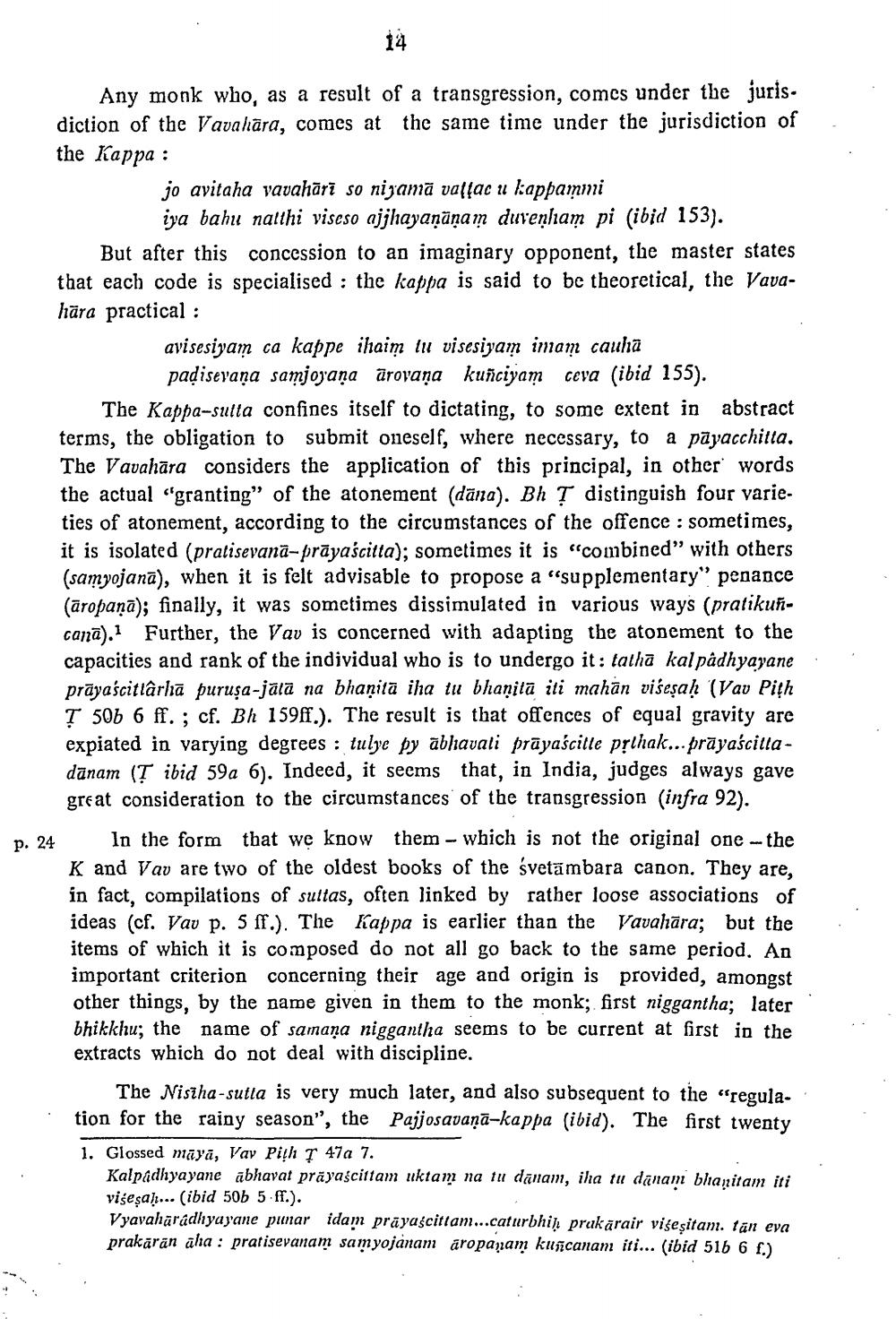________________
14
Any monk who, as a result of a transgression, comes under the jurisdiction of the Vavahara, comes at the same time under the jurisdiction of the Kappa:
jo avitaha vavahārī so nizamā valtac u kappammi
iya bahu natthi viseso ajjhayaṇāṇam duvenham pi (ibid 153).
But after this concession to an imaginary opponent, the master states that each code is specialised: the kappa is said to be theoretical, the Vavahāra practical:
avisesiyam ca kappe ihaim tu visesiyam imam cauha
padisevana samjoyaṇa ārovaṇa kuñciyam ceva (ibid 155).
The Kappa-sutta confines itself to dictating, to some extent in abstract terms, the obligation to submit oneself, where necessary, to a payacchitta. The Vavahara considers the application of this principal, in other words the actual "granting" of the atonement (dāna). Bh Ț distinguish four varieties of atonement, according to the circumstances of the offence: sometimes, it is isolated (pratisevanā-prāyaścitta); sometimes it is "combined" with others (samyojana), when it is felt advisable to propose a "supplementary" penance (āropaṇā); finally, it was sometimes dissimulated in various ways (pratikuñcana). Further, the Vav is concerned with adapting the atonement to the capacities and rank of the individual who is to undergo it: tatha kalpadhyayane prāyaścittarha purușa-jātā na bhaṇita iha tu bhanita iti mahān viseṣaḥ (Vav Pith T 50b 6 ff.; cf. Bh 159ff.). The result is that offences of equal gravity are expiated in varying degrees: tulye py abhavati prāyaścille pṛthak...prāyaścilladanam (T ibid 59a 6). Indeed, it seems that, in India, judges always gave great consideration to the circumstances of the transgression (infra 92).
p. 24
In the form that we know them - which is not the original one - the K and Vav are two of the oldest books of the svetambara canon. They are, in fact, compilations of sultas, often linked by rather loose associations of ideas (cf. Vav p. 5 ff.). The Kappa is earlier than the Vavahāra; but the items of which it is composed do not all go back to the same period. An important criterion concerning their age and origin is provided, amongst other things, by the name given in them to the monk; first niggantha; later bhikkhu; the name of samana niggantha seems to be current at first in the extracts which do not deal with discipline.
The Nistha-sutta is very much later, and also subsequent to the "regulation for the rainy season", the Pajjosavaṇa-kappa (ibid). The first twenty 1. Glossed māyā, Vav Pith T 47a 7.
Kalpadhyayane abhavat prayascittam uktam na tu danam, iha tu danam bhanitam iti viseṣaḥ... (ibid 50b 5 ff.).
Vyavaharadhyayane punar idam prayaścittam...caturbhiḥ prakārair viseşitam. tan eva prakaran aha: pratisevanam samyojanam aropanam kuñcanam iti... (ibid 51b 6 f.)




